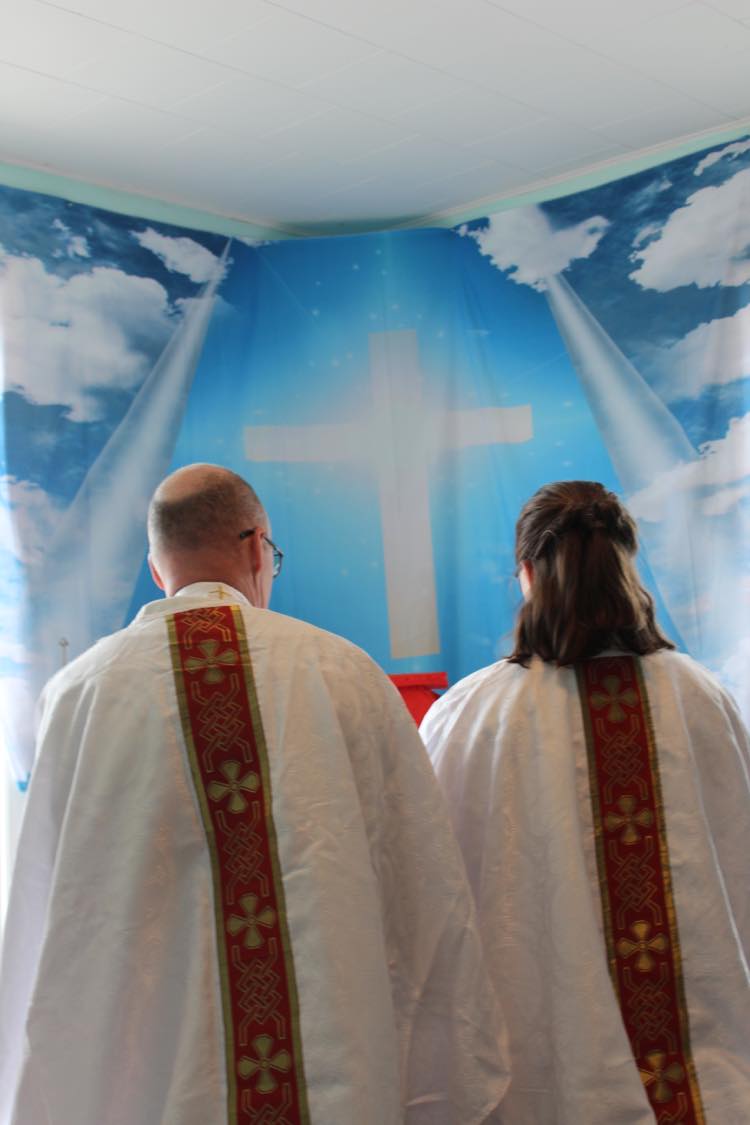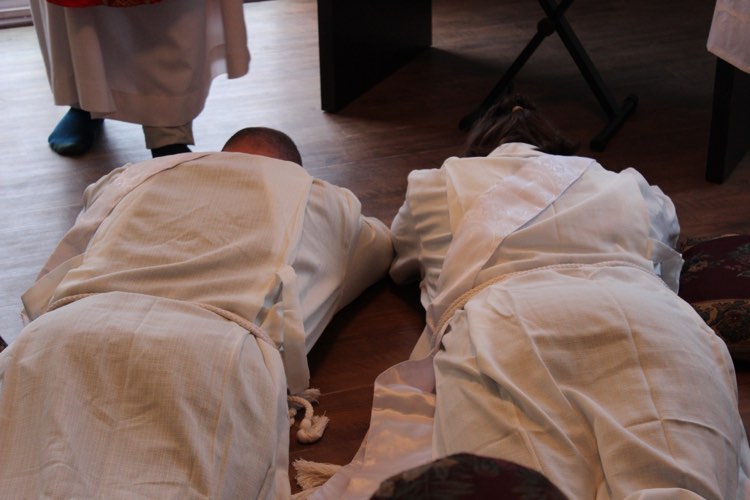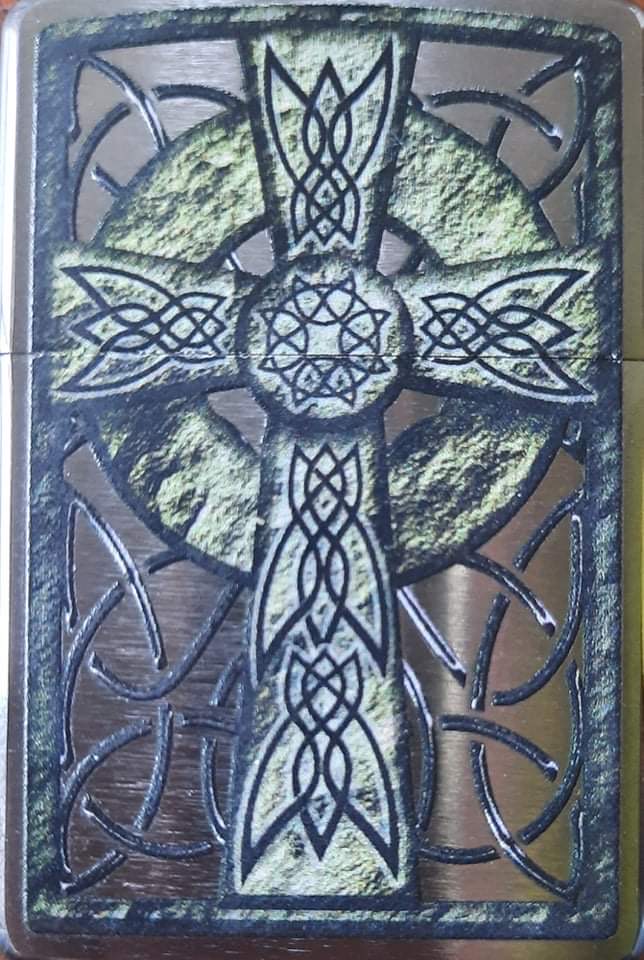- Home
- Seminary Studies
- Church History
Simply Catholic and Welcoming You
Church History
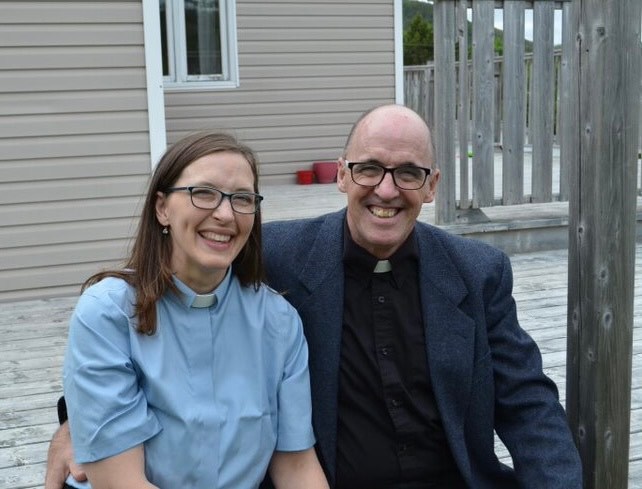
Fr. Philip and Amma Charlene Bradley a Married Couple and Lead Priests for St. Brigit's Community Catholic Church
Catholic Church history spans over 2000 years. Obviously I cannot begin to detail all of the history of the Catholic Church on a single web page. A great many books have been written on that subject and still there are gaps in time and lapses in information. I will instead try to follow the history of Christianity/Catholicism from it's beginnings through to St. Brigit's Community Catholic Church today.
Initially there was One Christian Church. Begun on Pentecost around 30 c.e. The Apostles of Jesus Christ left the room where they had been essentially hiding and went out to preach the Gospel of the Risen Christ.
Church history through the various Catholic Churches (Rites of the Catholic Church) trace their origins back to this event and through the direct tactile line of Apostolic Succession to the Apostles and Jesus Christ. The determinant for Apostolic Succession and valid priesthood orders are that priests must be ordained and bishops consecrated, in turn by a bishop whom, themselves, was properly ordained and then consecrated by a bishop by the laying on of hands (thus tactile lineage) in direct succession leading back to the Apostles.
Anything else is considered invalid, thus no ‘online’ or ‘mail order’ ordinations or consecrations. Direct tactile succession only.
The infant church faced opposition and persecution until Roman Emperor Constantine I decided to make Christianity the official religion of the Roman empire. This appears to have stemmed from the political savvy to unite his people across the empire and his own conversion. SInce he had ordered the execution of even his own son as a possible rival to his throne, this was not someone anyone argued with.
Constantine I convened the Council of Nicea in 325 a.d. 220 bishops attended, mostly from the Greek speaking Eastern Churches with only two delegates dispatched by the Latin speaking Pope Sylvester I, bishop of Rome.
The council was called to address the Arian controversy, a theological dispute about the nature of Jesus Christ. Arianism, championed by Arius, held that Christ was a created being, not divine. The council aimed to establish a unified doctrine on Christ's divinity within the Christian Church.
The Nicene Creed
The council produced the Nicene Creed, a statement of faith affirming that Christ is "God from God, Light from Light, True God from True God, begotten, not made, of one being with the Father".
Condemnation of Arianism
The council declared Arianism a heresy and condemned its teachings.
Establishment of Theological Consensus
The council's decisions helped to establish a theological consensus within the Christian Church on the nature of Christ.
First Ecumenical Council
The Council of Nicaea was the first of the seven ecumenical councils, gatherings of bishops representing the entire Christian world.
Foundation for Future Councils
The council's methods and outcomes set a precedent for future ecumenical councils, which continue to play a role in defining Christian doctrine.
Impact on Christian Belief
The Nicene Creed and the council's decisions have had a lasting impact on Christian belief and practice, shaping the understanding of the Trinity and the nature of Christ.
Part of this council’s mandate was to determine what they could agree on as scriptures and what was not unanimously acceptable as such. That which was not agreed upon was taken out of accepted scripture, even burned right there. Bishops who couldn’t agree or who outright opposed what was happening were summarily exiled from the empire and the church.
The Council of Nicea was the first of 21 Eccumenical Councils of the Roman Catholic Church with Eastern and Old Catholic Rites only recognizing the first seven.
Some councils, such as Ephesus, have been mainly doctrinal in their work; others, such as Vatican II, have been mainly pastoral. In the Roman Catholic Church, doctrinal definitions are capable of being promulgated infallibly; pastoral decisions, although binding, are not subject to infallibility. Eastern Rite and Old Catholics reject any claims of infallibility.
The first seven councils, those which are universally agreed upon, where;
The Council of Nicea in 325
Convened by Emperor Constantine, 306-337 and formally ratified by Pope Sylvester I, 314-335 (Detailed already)
The Council of Constantinople I in 381
Presided over by Pope Damasus I, 366-384 and Emperor Theodosius, 379-395
Decisions: Condemned Nestorianism, which denied the unity of the divine and human in Christ; defined that Mary is the Mother of God (Theotokos), a doctrine denied by the Nestorians and by most of today’s Protestants; condemned Pelagianism, which held that man could earn his own salvation through his natural powers.
The Council of Ephesus in 431
Presided over by Pope Celestine I, 422-432 and Theodosius II, 408-450
Decisions: Condemned Nestorianism, which denied the unity of the divine and human in Christ; defined that Mary is the Mother of God (Theotokos), a doctrine denied by the Nestorians and by most of today’s Protestants; condemned Pelagianism, which held that man could earn his own salvation through his natural powers.
The Council of Chalcedon in 451
Presided over by Pope Leo the Great, 440-461 and Emperor Marcian, 450-457
Decisions: Condemned Monophysitism (also called Eutychianism), which denied Christ’s human nature.
The Council of Constantinople II in 553
Presided over by Pope Vigilius, 537-555 and Emperor Justinian I, 527-565
Decisions: Condemned the Three Chapters, writings tainted by Nestorianism and composed by Theodore of Mopsuestia, Theodoret of Cyr, and Ibas of Edessa.
The Council of Constantinople III in 680
Presided over by Pope Agatho, 678-681 and Emperor Constantine IV, 668-685
Decisions: Condemned Monothelitism, which held Christ had but one will, the divine (this heresy arose as a reaction to the monophysite heresy); censured Pope Honorius I for a letter in which he made an ambiguous but not infallible statement about the unity of operations in Christ (an episode commonly used by anti-Catholic writers as an argument against papal infallibility).
The Council of Nicea II in 787
Presided over by Pope Hadrian II, 867-872 and Emperor Basil, 867-886
Decisions: Re-condemned Adoptionism; deposed Photius as patriarch of Constantinople, thereby ending the Photian Schism, but this did not completely remove disaffections between the West and the East (in 1054 came the final break, when the Eastern Orthodox Churches broke away from unity with Rome).
All of the other Eccumenical Councils are upheld by the Roman/Latin Rite of the Catholic Church but rejected by the other Catholic Rites of the Eastern and Western churches.
The East-West Schism
An action the doubtless changed church history forever was The East-West Schism, also known as the Great Schism or the Schism of 1054, refers to the formal separation of the Catholic Church in the West and the Eastern Orthodox Church in 1054. This split was caused by a combination of theological, political, and cultural differences that had been building for centuries.
Theological Differences
Disagreements over issues like the "Filioque clause" (whether the Holy Spirit proceeds from the Father and the Son, or only the Father) and the use of leavened or unleavened bread in the Eucharist were significant.
Political and Cultural Differences
The rise of a separate Western Empire and the influence of different languages, politics and cultures (Latin in the West, Greek in the East) further widened the divide.
Power Struggles and Rivalry
The Pope's claim to universal jurisdiction and the Patriarch of Constantinople's position within the Eastern Church also contributed to tensions.
Mutual Excommunication
In 1054, the Pope and Patriarch of Constantinople excommunicated each other, formally severing communion between the Western and Eastern churches.
Formal Separation
The East-West Schism resulted in the formal establishment of two distinct branches of Christianity, the Catholic Church and the Eastern Orthodox Church.
Impact on Church History
The schism had lasting consequences on the course of history, shaping the development of both the Eastern and Western Christian worlds.
Continuing Differences
Despite some efforts at reconciliation, significant differences in theology, practice, and authority continue to distinguish the two churches. Some 23 Eastern Rite Churches have reconciled with Rome and now operate under their own Code of Canons of the Eastern Churches.
The Code of Canons of the Eastern Churches promulgated in 1990, outlines the canon law governing the 23 Eastern Catholic Churches, while each specific Church retains its own unique liturgical, theological, and disciplinary practices.
Church History; The Emergence of The Old Catholic Church
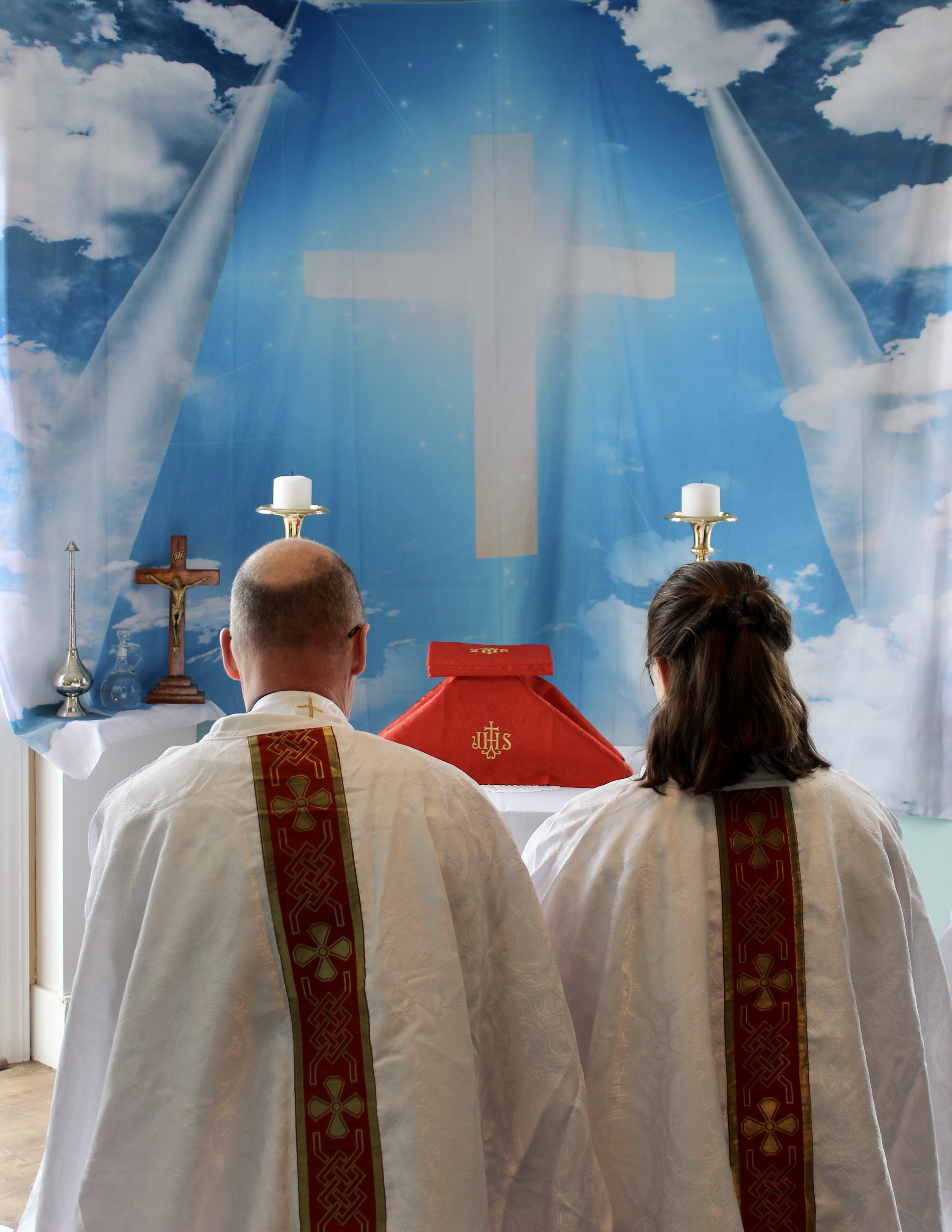
Fr. Philip and Amma Charlene Bradley Kneel Before the Altar.
The Old Catholic Church emerged in the late 19th century as a response to the First Vatican Council (1869-1870) and the dogma of papal infallibility defined by the council. Several groups of Catholics, primarily in Germany, Austria, and Switzerland, rejected this dogma and formed independent communities adhering to the beliefs and practices of the pre-1870 Catholic Church.
Essentially any bishops in agreement with the doctrine of infallibility became known as Roman Catholics while those who rejected this doctrine and stuck to pre-existing practices became known as Old Catholics (following the old ways).
The First Vatican Council
Church history was again determined by the council's definition of papal infallibility, which stated that the Pope is free from error when speaking ex cathedra on matters of faith and morals, was a major point of contention.
Rejection of Infallibility
Many Catholics, particularly in Germany, Austria, and Switzerland, rejected this dogma and formed separate communities.
Leadership
The formation of the Old Catholic Church was led by figures like Ignaz von Döllinger.
Union of Utrecht
The Old Catholic Churches in the Netherlands, Germany, Switzerland, and other regions joined together to form the Union of Utrecht, which recognizes the Old Catholic Church as an integral part of the Catholic Church but not under papal authority.
Influence of the See of Utrecht
The Old Catholic movement in Europe drew legitimacy and leadership from the Jansenist Church of Utrecht in the Netherlands, which had maintained an episcopal succession independent of Rome. This succession was crucial for establishing the validity of Old Catholic clergy and their sacraments.
Establishment of the Polish National Catholic Church
The Polish National Catholic Church, founded in the United States and later extending into Canada, played a distinct role in the development of Old Catholicism in North America. This church, with a strong national identity, sought to address the needs of Polish-American and Canadian Catholics who felt marginalized by the established Catholic Church. The Polish National Catholic Church also received its episcopal succession from the Old Catholic Church of Switzerland.
Growth and Spread of the Old Catholic Church in Canada
The Old Catholic movement, particularly through the Polish National Catholic Church, spread to other areas of Canada, often establishing churches in communities with significant Polish populations. These churches often provided a sense of religious belonging and identity for those who felt disenfranchised by the mainstream Catholic Church.
Modern Structure
Today, the Old Catholic Church in Canada is represented by various jurisdictions, including the Polish National Catholic Church, which is a member of the Union of Scranton. The Union of Utrecht, another major Old Catholic grouping, is also present in Canada.
Additionally, The Community Catholic Church of Canada was formerly the Old Catholic Church of Canada, until it was renamed in 2007 and is now provincially registered as a not for profit organisation. They are good people doing good work and seeing steady growth.
St. Brigit’s Community Catholic Church has roots in the Old Catholic Church and in the Old Catholic Apostolic Church through which we trace our Apostolic Succession and valid priesthood orders. We remain associate clergy with the Independent Liberal Catholic Fellowship which the Old Catholic Apostolic Church administers on behalf of the Liberal Catholic Clergy.
We have a Concordat of Inter communion with the Holy Celtic Catholic Church in Canada. Their presiding bishop is the Most Reverend Daniel Durrnberger.
We also have a Concordat of Inter communion with the Prince of Peace Community Catholic Church. Their presiding bishop is the Most Reverend Allen Jones.
Recent Articles
-
Catholic-Confession
Apr 19, 25 08:53 PM
Full breakdown of the Catholic Confession Sacrament of Reconciliation -
Ordination, incardination and dismissal of clergy
Mar 03, 25 06:47 PM
Overview of Ordination to Holy Orders, incardination and dismissal of clergy -
Catholic Last Rites
Mar 03, 25 06:41 PM
An explanation of the Catholic Last Rites and Anointing of the Sick
